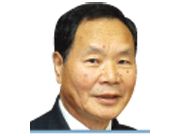US on Korean unification
Despite its long, deep involvement in the issues of Korea, the United States has never pursued a consistent policy that would help bring about Korean unification. The United States has a multi-faceted image to the South Korean people: a liberator from Japanese colonial rule, a divider of the peninsula, a contributor to the outbreak of the Korean War, a rescuer of the South from the brink of defeat in the war, an advocate for freedom and democracy while a practical supporter of military dictatorship, and a provider of security and market for the South to achieve what it proudly is today.
The priority of U.S. policy toward Korea has been focused on the immediate security imperatives ― deterrence of war, non-proliferation of nuclear weapons and the maintenance of the status quo. Korea has always been a dependent variable to the larger strategic equation that the United States forged to protect its national interest.
Currently, the United States is more preoccupied with Iran than North Korea, more with the Middle East than Europe, and more with a rising China than the unification of Korea.
Former President George H. W. Bush was the first U.S. president who publicly spoke in support of Korean unification. In January 1992, he said the United States would support a peaceful unification of Korea that would be acceptable to the South Korean people, without specifying any backup measures.
In October 2000, Washington seriously considered undertaking a normalization process with North Korea under the conditions that it would give up its nuclear and missile development programs, respect human rights, stop illicit international activities, and cease terrorist support. However, transformation of the North Korean system was not a requirement.
In retrospect, even in the best days of cooperation between the administrations of Kim Dae-jung and Bill Clinton following the first inter-Korean summit, there was no discussion of any specific U.S. role in the unification process. Nor was there any explicit expression of U.S. support for a unified Korea. Any further progress on unification was left to the North and the South which agreed to “take their own initiatives.”
The Clinton administration, like all its predecessors, did not have a clear policy on unification. Even William Perry’s final report of the Review of U.S. Policy toward North Korea in October 1999 did not mention an alteration to the status quo nor did it express U.S. support for Korean unification.
President George W. Bush openly talked about a military option targeting the North. However, Bush had no plan to attack the North or to bring it down. In other words, the Bush administration had no policy on Korean unification by any of the three options: force, absorption, or peaceful engagement.
The Barack Obama administration was not different in terms of its policy on Korean unification. However, it agreed to include a mention of unification in the Joint Vision statement for the ROK-U.S. alliance of June 11, 2009. The statement contained a rhetorical expression: “We aim to build a better future, leading to peaceful unification on the principles of free democracy and a market economy.” This statement defined a desirable end state of Korean unification from the perspectives of Seoul and Washington.
However, it did not mention how such a goal should be achieved. It only inferred to an unstated preference of unification by absorption at the end of a wishful sudden change in North Korea. On the other hand, “peaceful unification” in the statement implied that Washington would not support South Korea if it wants to unify the Korean Peninsula by force.
The short-lived leap day agreement of Feb. 29, 2012, reached after two months had passed following Kim Jong-il’s death in December 2011, was seen as an end to Washington’s ill-conceived “waiting game.” Unfortunately, this hard-won deal was killed instantly by a North Korean rocket launch last April.
In November, the next U.S. president will be chosen between Barrack Obama and Mitt Romney. Both candidates are committed to eliminating North Korea’s nuclear weapons. Romney will be tougher on the North. However, he has no plan or strategy for Korean unification, either. A new U.S. administration, Democratic or Republican, will continue to approach the Korean issues as part of its overall strategy to protect U.S. interest in Asia.
The four major powers surrounding the peninsula ― China, the United States, Russia and Japan ― would not want a reconfiguration of the geostrategic balance in the region that might affect their interest as the result of a unified Korea. This was one of the justifications for both China and the United States to maintain the status quo on the Korean Peninsula. Like China, the United States will not produce a Korean unification policy on its own beyond the level of rhetoric.
If a serious unification process were to be undertaken, it should begin from within in the South. Its external task will be to gain the support of the four powers for a unified Korea. The task will be to present them a persuasive, visionary plan to build a new stable security alignment for the region.
The bottom line is that the only viable option for unification is to undertake a long-term, gradual unification process through peaceful engagement and cooperation. The longer this process takes, the brighter the prospects may be for North Korea’s reform and opening and its preparation for integration into a single system of democracy and market economy in the end.
Unification is up to the Korean people. None of their allies will bring it to them. It will not come all of a sudden. It may take several decades, but unification will never come unless its process is undertaken. What’s your take?
The writer is a research professor of the Ilmin Institute of International Relations at Korea University and a visiting professor at the University of North Korean Studies. He is also an ICAS fellow. Reach him at tong.kim8@yahoo.com. <The Korea Times/Tong Kim>




